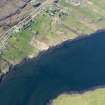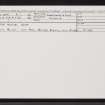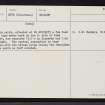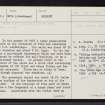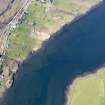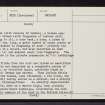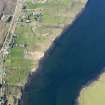Pricing Change
New pricing for orders of material from this site will come into place shortly. Charges for supply of digital images, digitisation on demand, prints and licensing will be altered.
Skye, Tote House
Cairn (Period Unassigned), Cremation (Period Unassigned), Human Remains (Period Unassigned), Axe (Iron), Brooch (Bronze), Rivet(S) (Iron), Unidentified Flint(S) (Flint)
Site Name Skye, Tote House
Classification Cairn (Period Unassigned), Cremation (Period Unassigned), Human Remains (Period Unassigned), Axe (Iron), Brooch (Bronze), Rivet(S) (Iron), Unidentified Flint(S) (Flint)
Alternative Name(s) Tote Cairn
Canmore ID 11283
Site Number NG44NW 4
NGR NG 4097 4975
Datum OSGB36 - NGR
Permalink http://canmore.org.uk/site/11283
- Council Highland
- Parish Snizort
- Former Region Highland
- Former District Skye And Lochalsh
- Former County Inverness-shire
NG44NW 4 4097 4975
See also NG44NW 13.
In the autumn of 1922 a large grass-grown cairn on the foreshore at Tote was excavated by T C Lethbridge. The cairn was about 40ft in diameter and about 8ft high. In the top was a cup-shaped depression which may have been caused by robbery for wall-building, or by a secondary burial. At ground level in the centre of the cairn was a short cist containing upwards of 150 flint and other flakes and two rude scrapers. There was no trace of bone, although charcoal was abundant. (T C Lethbridge 1920) The secondary burial was about 1 1/2ft below the surface of the depression on top of the cairn: it was composed of fine sand in which were a few fragments of a human femur and burnt bones. Associated with the burial were an iron axe (with remains of handle), a bronze pen- annular broach (with fragments of leather still adhering to it), a bone bead, a hone, a piece of wood, 2ins long, a great number of rusty pieces of iron attached to fragments of wood - probably the remains off a shield, but also described as boat rivets, (A O Curle M Olsen and H Shetelig 1954) and several small iron fragments. The finds are in the private possession of T C Lethbridge (S Grieg 1940).
The flints from the cist are listed as mesolithic survivals and described as a remarkable series of buchite, or vitrified shale, artifacts found in two (sic) Bronze Age cairns. They include fairly large fine blades, some retouched, a few cores, one apparently having served as a scraper, and a steeply dressed trimming-flake. An abruptly edge-blunted microlith, made on a narrow blade, very probably cut by micro-burin technique, constitutes the most northerly example of the kind in the British Isles (A D Lacaille 1954).
T C Lethbridge 1920; S Grieg 1940; A O Curle, M Olsen and H Shetelig 1954; A D Lacaille 1954.
This cairn, situated at NG 4097 4975 a few feet above high water mark on the E side of Loch Snizort, now measures 19.0m in diameter and 1.2m in height. The central excavation is very obvious with the stones lying loose; the remainder of the cairn is turf covered.
Visited by OS (C F W) 24 April 1961.
Flints from this cairn are in Cambridge University Museum of Archaeology and Ethnology; deposited by T C Lethbridge (51.1063).
(Undated) information in Museum Accessions Register.














